 Technology peripherals
Technology peripherals
 AI
AI
 4090 Generator: Compared with the A100 platform, the token generation speed is only less than 18%, and the submission to the inference engine has won hot discussions
4090 Generator: Compared with the A100 platform, the token generation speed is only less than 18%, and the submission to the inference engine has won hot discussions
4090 Generator: Compared with the A100 platform, the token generation speed is only less than 18%, and the submission to the inference engine has won hot discussions
PowerInfer improves the efficiency of running AI on consumer-grade hardware
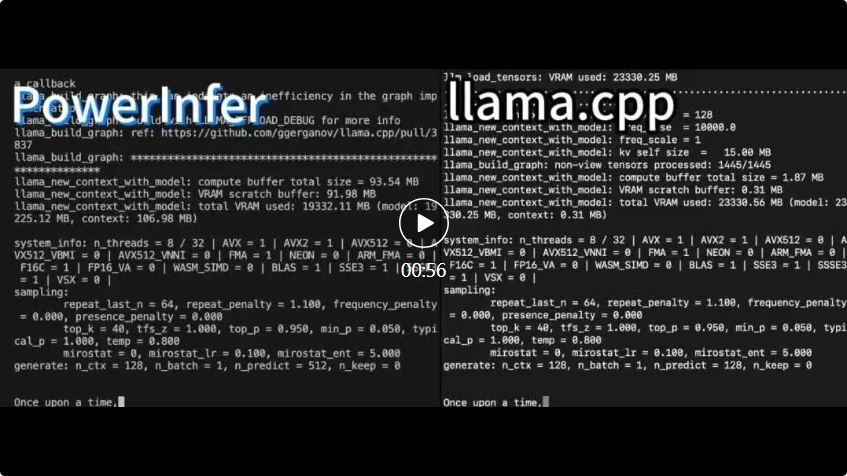 ## PowerInfer and llama.cpp both run on the same hardware and take full advantage of the VRAM on the RTX 4090.
## PowerInfer and llama.cpp both run on the same hardware and take full advantage of the VRAM on the RTX 4090. 
- Project link: https://github.com/SJTU-IPADS/PowerInfer
- Paper link: https://ipads.se.sjtu.edu.cn/_media/ publications/powerinfer-20231219.pdf
Faclon 40B, with support for Mistral-7B coming soon.
In one day, PowerInfer successfully obtained 2K stars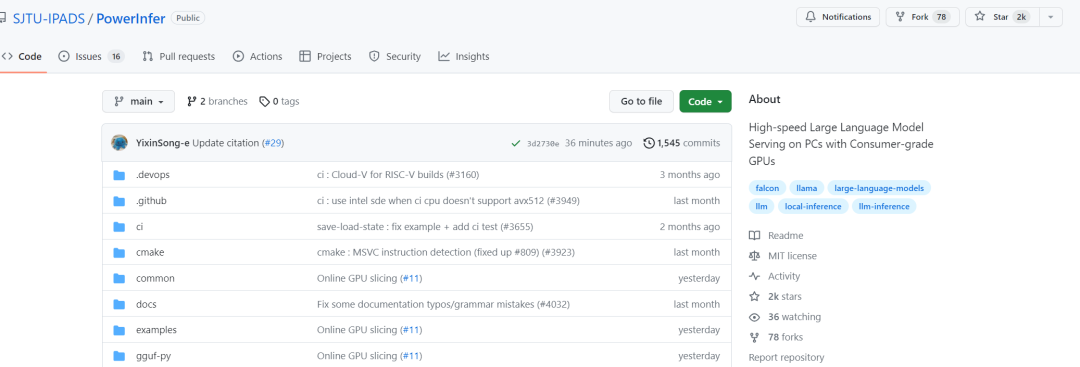
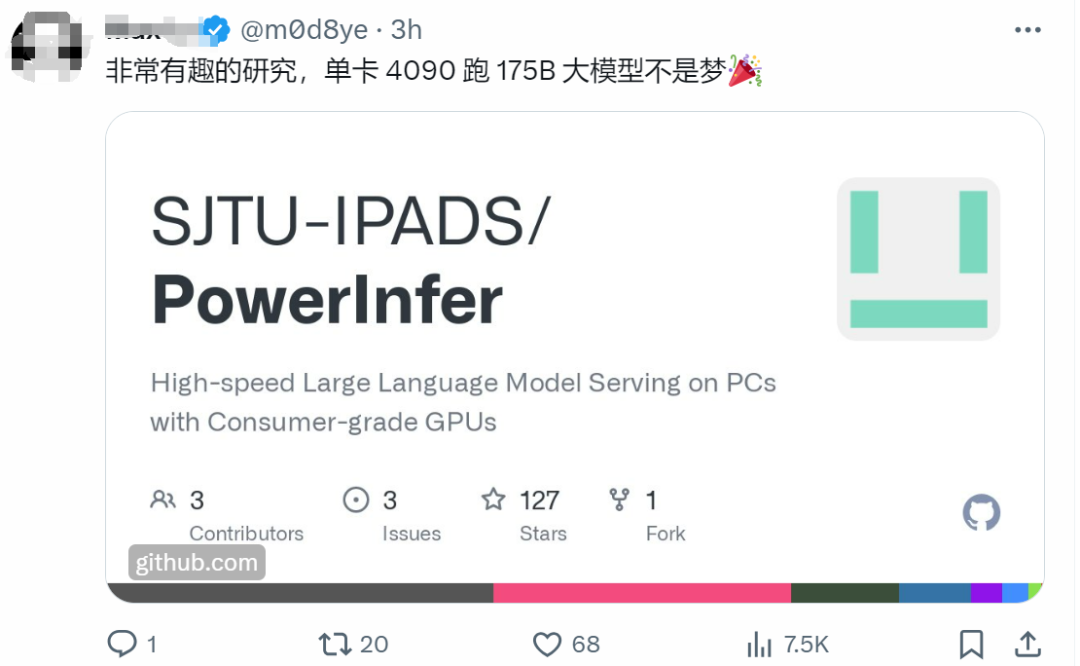
PowerInfer architecture
The key to PowerInfer design is to exploit the high degree of locality inherent in LLM inference, which is characterized by a power-law distribution in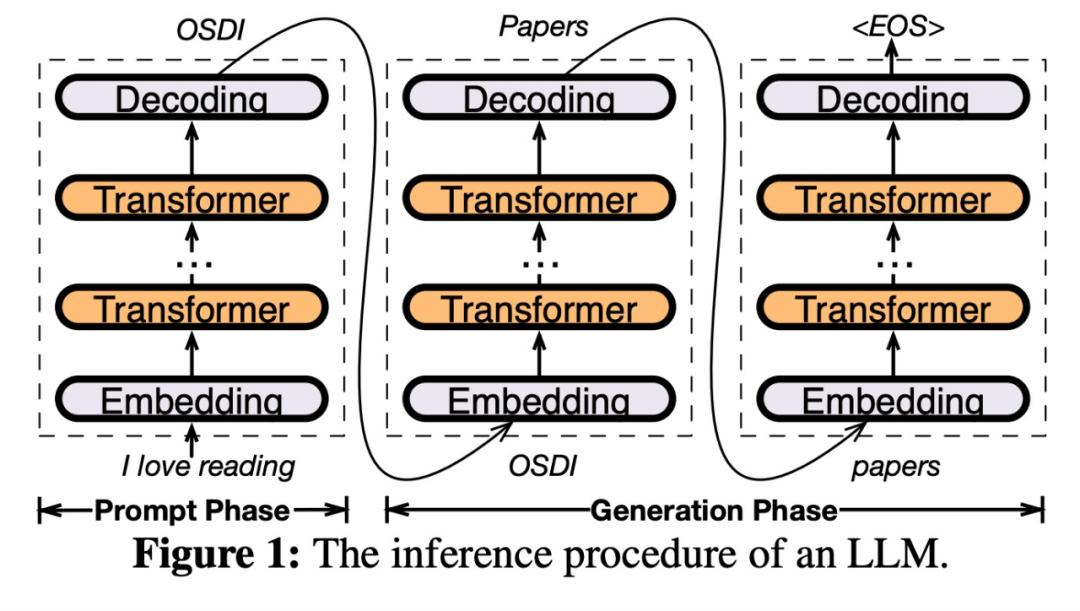
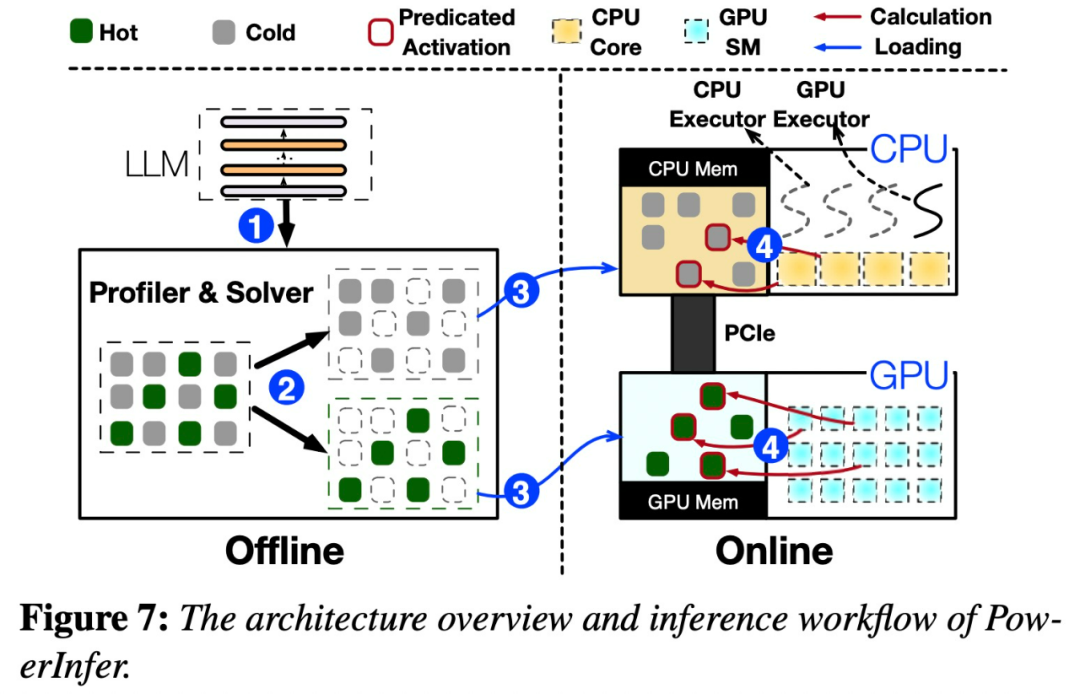
Once input is received, the predictor will identify neurons in the current layer that are likely to be activated. It should be noted that thermally activated neurons identified through offline statistical analysis may not be consistent with the actual activation behavior at runtime. For example, although neuron 7 is labeled as thermally activated, it is not actually so. The CPU and GPU then process those neurons that are already activated and ignore those that are not. The GPU is responsible for computing neurons 3 and 5, while the CPU handles neuron 4. When the calculation of neuron 4 is completed, its output will be sent to the GPU for result integration
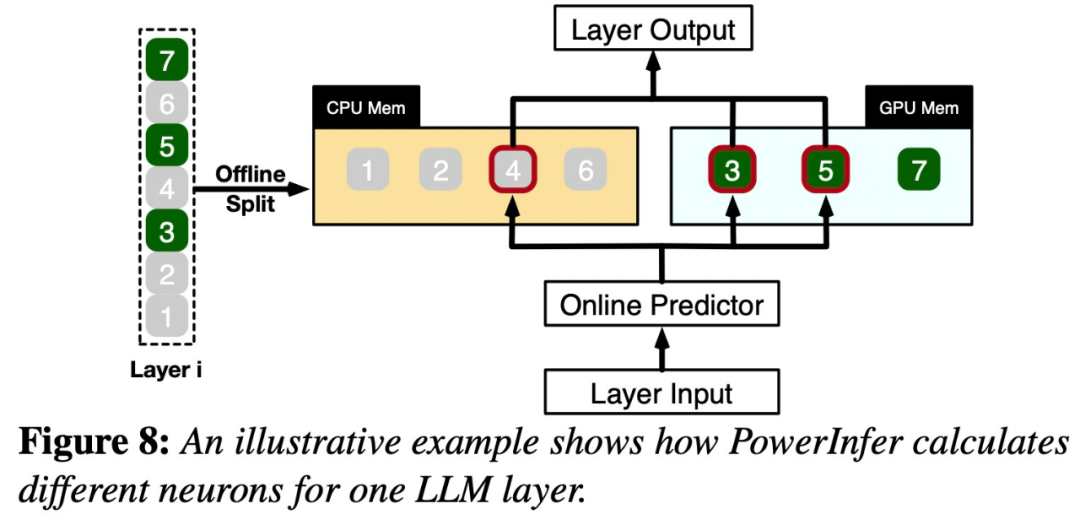
In order to rewrite the content without changing the original meaning, the language needs to be rewritten Written in Chinese. It is not necessary to appear the original sentence
The study was conducted using the OPT model with different parameters In order to rewrite the content without changing the original meaning, the language needs to be rewritten into Chinese. It is not necessary to present original sentences, parameters range from 6.7B to 175B, and Falcon (ReLU)-40B and LLaMA (ReGLU)-70B models are also included. It is worth noting that the size of the 175B parameter model is comparable to the GPT-3 model.
This article also compares PowerInfer with llama.cpp, a state-of-the-art native LLM inference framework. To facilitate comparison, this study also extended llama.cpp to support the OPT model
Considering that the focus of this article is on low-latency settings, the evaluation metric adopts the end-to-end generation speed in terms of the number of tokens generated per second. (tokens/s) for quantification
This study first compares the end-to-end inference performance of PowerInfer and llama.cpp with a batch size of 1
On a machine equipped with NVIDIA RTX 4090 On PC-High, Figure 10 shows the generation speed of various models and input and output configurations. On average, PowerInfer achieves a generation speed of 8.32 tokens/s, with a maximum of 16.06 tokens/s, which is significantly better than llama.cpp, 7.23 times higher than llama.cpp, and 11.69 times higher than Falcon-40B
As the number of output tokens increases, the performance advantages of PowerInfer become more obvious, because the generation phase plays a more important role in the overall inference time. At this stage, a small number of neurons are activated on both the CPU and GPU, which reduces unnecessary calculations compared to llama.cpp. For example, in the case of OPT-30B, only about 20% of the neurons are activated for each token generated, most of which are processed on the GPU, which is the benefit of PowerInfer neuron-aware reasoning
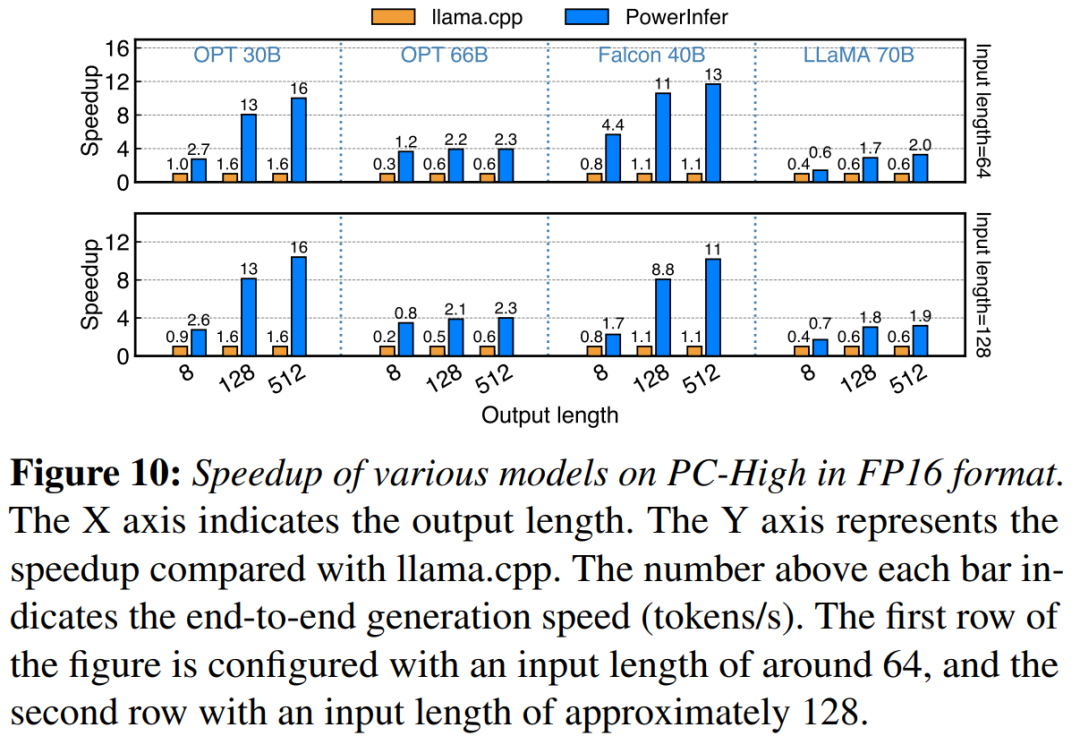
As shown in Figure 11, despite being on PC-Low, PowerInfer still achieved considerable performance enhancements, with an average speedup of 5.01x and a peak speedup of 7.06x. However, these improvements are smaller compared to PC-High, mostly due to PC-Low's 11GB GPU memory limit. This limit affects the number of neurons that can be assigned to the GPU, especially for models with approximately 30B parameters or more, resulting in greater reliance on the CPU to handle large numbers of activated neurons
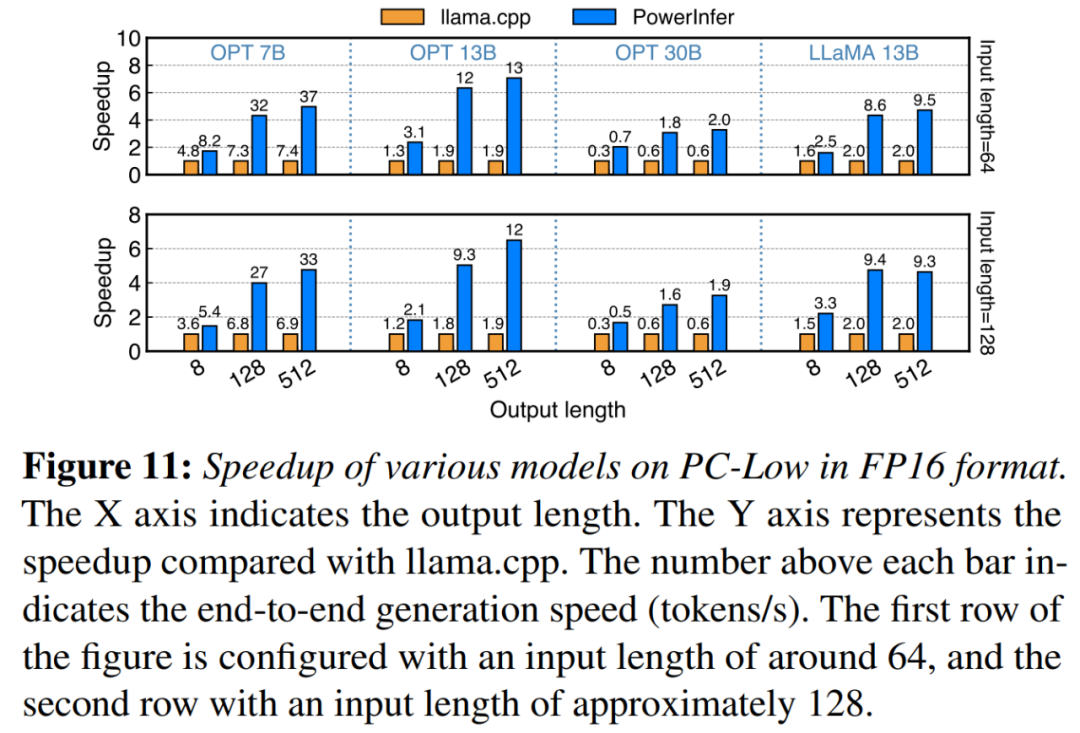
Figure 12 shows the neuron load distribution between CPU and GPU between PowerInfer and llama.cpp. Notably, on PC-High, PowerInfer significantly increases the GPU's neuron load share, from an average of 20% to 70%. This shows that the GPU processes 70% of the activated neurons. However, in cases where the memory requirements of the model far exceed the GPU capacity, such as running a 60GB model on an 11GB 2080Ti GPU, the neuron load on the GPU is reduced to 42%. This decrease is due to the limited memory of the GPU, which is not enough to accommodate all activated neurons, so the CPU is required to calculate a portion of the neurons
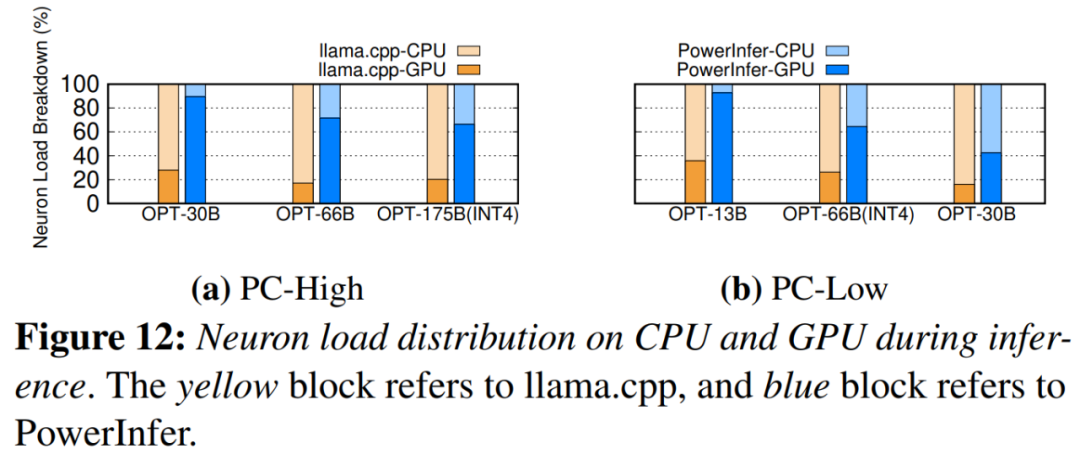
Figure 13 illustrates the use of PowerInfer effective support INT4 quantized compressed LLM. On PC-High, PowerInfer has an average response speed of 13.20 tokens/s, with a peak response speed of 29.08 tokens/s. Compared to llama.cpp, the average speedup is 2.89x and the maximum speedup is 4.28x. On PC-Low, the average speedup is 5.01x and the peak is 8.00x. The reduced memory requirements due to quantization allow PowerInfer to manage larger models more efficiently. For example, using the OPT-175B model on PC-High required rewriting the language into Chinese in order to rewrite the content without changing the original meaning. There is no need to appear in the original sentence, PowerInfer reaches almost two tokens per second, exceeding llama.cpp by 2.66 times.
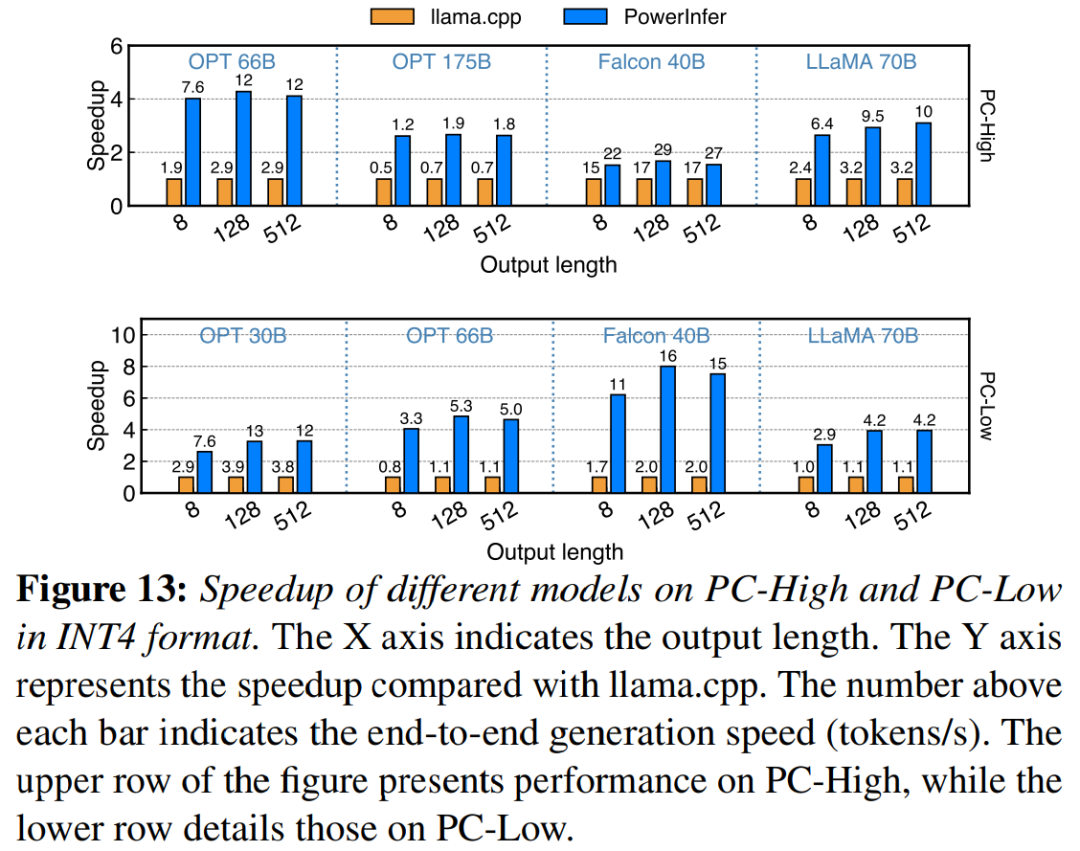
Finally, the study also evaluated the end-to-end inference performance of PowerInfer under different batch sizes. As shown in Figure 14, when the batch size is less than 32, PowerInfer shows significant advantages, with an average performance improvement of 6.08 times compared to llama. As the batch size increases, the speedup provided by PowerInfer decreases. However, even with the batch size set to 32, PowerInfer still maintains considerable speedup
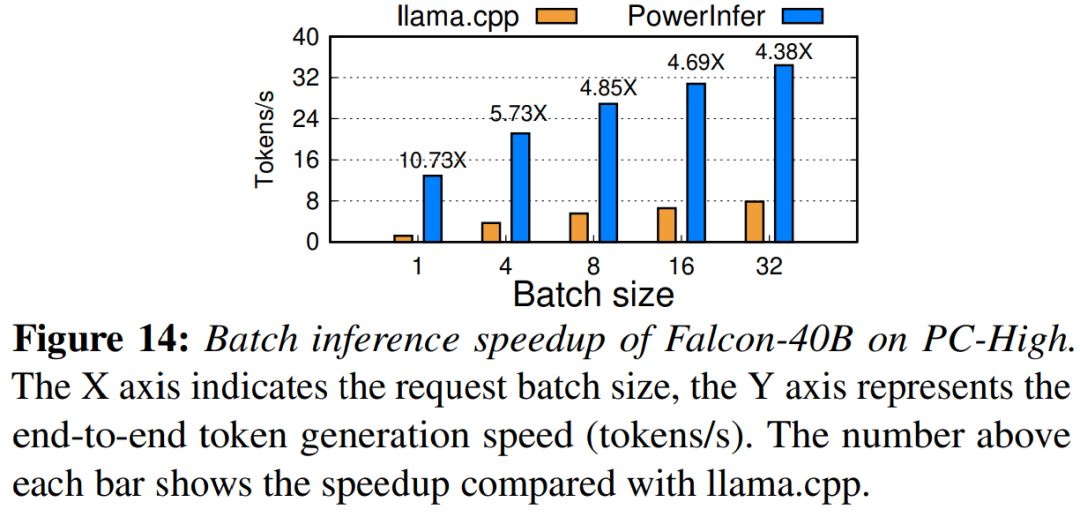
Reference link: https://weibo.com/1727858283 /NxZ0Ttdnz
Please see the original paper for more information
The above is the detailed content of 4090 Generator: Compared with the A100 platform, the token generation speed is only less than 18%, and the submission to the inference engine has won hot discussions. For more information, please follow other related articles on the PHP Chinese website!

Hot AI Tools

Undresser.AI Undress
AI-powered app for creating realistic nude photos

AI Clothes Remover
Online AI tool for removing clothes from photos.

Undress AI Tool
Undress images for free

Clothoff.io
AI clothes remover

AI Hentai Generator
Generate AI Hentai for free.

Hot Article

Hot Tools

Notepad++7.3.1
Easy-to-use and free code editor

SublimeText3 Chinese version
Chinese version, very easy to use

Zend Studio 13.0.1
Powerful PHP integrated development environment

Dreamweaver CS6
Visual web development tools

SublimeText3 Mac version
God-level code editing software (SublimeText3)

Hot Topics
 From RLHF to DPO to TDPO, large model alignment algorithms are already 'token-level'
Jun 24, 2024 pm 03:04 PM
From RLHF to DPO to TDPO, large model alignment algorithms are already 'token-level'
Jun 24, 2024 pm 03:04 PM
The AIxiv column is a column where this site publishes academic and technical content. In the past few years, the AIxiv column of this site has received more than 2,000 reports, covering top laboratories from major universities and companies around the world, effectively promoting academic exchanges and dissemination. If you have excellent work that you want to share, please feel free to contribute or contact us for reporting. Submission email: liyazhou@jiqizhixin.com; zhaoyunfeng@jiqizhixin.com In the development process of artificial intelligence, the control and guidance of large language models (LLM) has always been one of the core challenges, aiming to ensure that these models are both powerful and safe serve human society. Early efforts focused on reinforcement learning methods through human feedback (RL
 The author of ControlNet has another hit! The whole process of generating a painting from a picture, earning 1.4k stars in two days
Jul 17, 2024 am 01:56 AM
The author of ControlNet has another hit! The whole process of generating a painting from a picture, earning 1.4k stars in two days
Jul 17, 2024 am 01:56 AM
It is also a Tusheng video, but PaintsUndo has taken a different route. ControlNet author LvminZhang started to live again! This time I aim at the field of painting. The new project PaintsUndo has received 1.4kstar (still rising crazily) not long after it was launched. Project address: https://github.com/lllyasviel/Paints-UNDO Through this project, the user inputs a static image, and PaintsUndo can automatically help you generate a video of the entire painting process, from line draft to finished product. follow. During the drawing process, the line changes are amazing. The final video result is very similar to the original image: Let’s take a look at a complete drawing.
 Posthumous work of the OpenAI Super Alignment Team: Two large models play a game, and the output becomes more understandable
Jul 19, 2024 am 01:29 AM
Posthumous work of the OpenAI Super Alignment Team: Two large models play a game, and the output becomes more understandable
Jul 19, 2024 am 01:29 AM
If the answer given by the AI model is incomprehensible at all, would you dare to use it? As machine learning systems are used in more important areas, it becomes increasingly important to demonstrate why we can trust their output, and when not to trust them. One possible way to gain trust in the output of a complex system is to require the system to produce an interpretation of its output that is readable to a human or another trusted system, that is, fully understandable to the point that any possible errors can be found. For example, to build trust in the judicial system, we require courts to provide clear and readable written opinions that explain and support their decisions. For large language models, we can also adopt a similar approach. However, when taking this approach, ensure that the language model generates
 Topping the list of open source AI software engineers, UIUC's agent-less solution easily solves SWE-bench real programming problems
Jul 17, 2024 pm 10:02 PM
Topping the list of open source AI software engineers, UIUC's agent-less solution easily solves SWE-bench real programming problems
Jul 17, 2024 pm 10:02 PM
The AIxiv column is a column where this site publishes academic and technical content. In the past few years, the AIxiv column of this site has received more than 2,000 reports, covering top laboratories from major universities and companies around the world, effectively promoting academic exchanges and dissemination. If you have excellent work that you want to share, please feel free to contribute or contact us for reporting. Submission email: liyazhou@jiqizhixin.com; zhaoyunfeng@jiqizhixin.com The authors of this paper are all from the team of teacher Zhang Lingming at the University of Illinois at Urbana-Champaign (UIUC), including: Steven Code repair; Deng Yinlin, fourth-year doctoral student, researcher
 A significant breakthrough in the Riemann Hypothesis! Tao Zhexuan strongly recommends new papers from MIT and Oxford, and the 37-year-old Fields Medal winner participated
Aug 05, 2024 pm 03:32 PM
A significant breakthrough in the Riemann Hypothesis! Tao Zhexuan strongly recommends new papers from MIT and Oxford, and the 37-year-old Fields Medal winner participated
Aug 05, 2024 pm 03:32 PM
Recently, the Riemann Hypothesis, known as one of the seven major problems of the millennium, has achieved a new breakthrough. The Riemann Hypothesis is a very important unsolved problem in mathematics, related to the precise properties of the distribution of prime numbers (primes are those numbers that are only divisible by 1 and themselves, and they play a fundamental role in number theory). In today's mathematical literature, there are more than a thousand mathematical propositions based on the establishment of the Riemann Hypothesis (or its generalized form). In other words, once the Riemann Hypothesis and its generalized form are proven, these more than a thousand propositions will be established as theorems, which will have a profound impact on the field of mathematics; and if the Riemann Hypothesis is proven wrong, then among these propositions part of it will also lose its effectiveness. New breakthrough comes from MIT mathematics professor Larry Guth and Oxford University
 arXiv papers can be posted as 'barrage', Stanford alphaXiv discussion platform is online, LeCun likes it
Aug 01, 2024 pm 05:18 PM
arXiv papers can be posted as 'barrage', Stanford alphaXiv discussion platform is online, LeCun likes it
Aug 01, 2024 pm 05:18 PM
cheers! What is it like when a paper discussion is down to words? Recently, students at Stanford University created alphaXiv, an open discussion forum for arXiv papers that allows questions and comments to be posted directly on any arXiv paper. Website link: https://alphaxiv.org/ In fact, there is no need to visit this website specifically. Just change arXiv in any URL to alphaXiv to directly open the corresponding paper on the alphaXiv forum: you can accurately locate the paragraphs in the paper, Sentence: In the discussion area on the right, users can post questions to ask the author about the ideas and details of the paper. For example, they can also comment on the content of the paper, such as: "Given to
 Unlimited video generation, planning and decision-making, diffusion forced integration of next token prediction and full sequence diffusion
Jul 23, 2024 pm 02:05 PM
Unlimited video generation, planning and decision-making, diffusion forced integration of next token prediction and full sequence diffusion
Jul 23, 2024 pm 02:05 PM
Currently, autoregressive large-scale language models using the next token prediction paradigm have become popular all over the world. At the same time, a large number of synthetic images and videos on the Internet have already shown us the power of diffusion models. Recently, a research team at MITCSAIL (one of whom is Chen Boyuan, a PhD student at MIT) successfully integrated the powerful capabilities of the full sequence diffusion model and the next token model, and proposed a training and sampling paradigm: Diffusion Forcing (DF). Paper title: DiffusionForcing:Next-tokenPredictionMeetsFull-SequenceDiffusion Paper address: https:/
 Axiomatic training allows LLM to learn causal reasoning: the 67 million parameter model is comparable to the trillion parameter level GPT-4
Jul 17, 2024 am 10:14 AM
Axiomatic training allows LLM to learn causal reasoning: the 67 million parameter model is comparable to the trillion parameter level GPT-4
Jul 17, 2024 am 10:14 AM
Show the causal chain to LLM and it learns the axioms. AI is already helping mathematicians and scientists conduct research. For example, the famous mathematician Terence Tao has repeatedly shared his research and exploration experience with the help of AI tools such as GPT. For AI to compete in these fields, strong and reliable causal reasoning capabilities are essential. The research to be introduced in this article found that a Transformer model trained on the demonstration of the causal transitivity axiom on small graphs can generalize to the transitive axiom on large graphs. In other words, if the Transformer learns to perform simple causal reasoning, it may be used for more complex causal reasoning. The axiomatic training framework proposed by the team is a new paradigm for learning causal reasoning based on passive data, with only demonstrations





